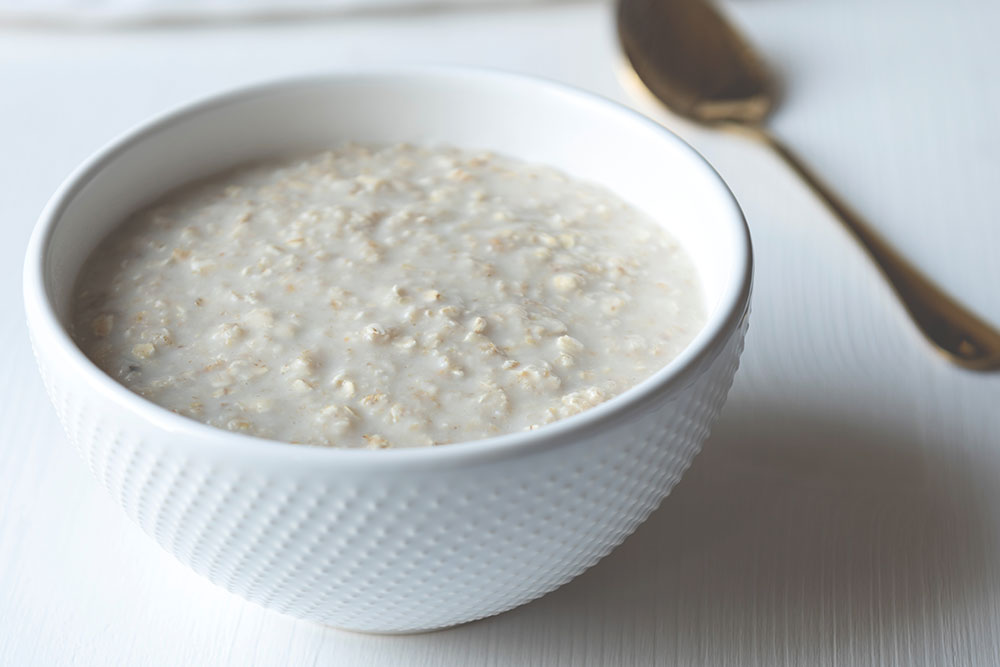You hear it all the time: make sure to get your daily fiber! Here’s how to be mindfully in tune with your body’s needs, and stay healthy and regular.
BY: WENDY LOPEZ, MS, RD, CDE & JESSICA JONES, MS, RD, CDE
When we used to work for the New York City Department of Health in the Bronx, we had the opportunity to teach cooking demos and nutrition workshops at farmers markets located in communities with limited access to fresh produce.
Every week, we showed people how to eat healthier by adding more plant-based foods into their diet. Can you guess what our favorite topic to teach?
Fiber!
For people of all ages, fiber is basically your best friend. It has a plethora of health benefits, like helping to reduce cholesterol, reducing risks for cardiovascular disease, and helping to keep your bowels regular. A study published in the Archives of Internal Medicine found that people who ate foods rich in fiber, specifically about 21 grams per day, had 12% less coronary heart disease and 11% less cardiovascular disease compared to those eating 5 grams or less daily.
The problem is that most people aren’t getting enough fiber in their diet. In fact, the CDC found that the average fiber intake of adult men and women on a given day was 18 and 15 grams, respectively. This is a lot less than the recommended daily fiber intake, which is 25 grams a day for women and 38 grams for men.
You may be wondering: where do you find fiber anyway?
The answer is simple: plant-based foods. Fruits, vegetables, nuts, seeds, beans, and whole grains tend to be good sources of fiber. On the flip side, animal products do not contain any fiber. Eggs and fish, for example, are perfectly healthy but they’re fiberless (most of our workshop participants were really surprised by this).
Here is a snapshot of a few foods that are naturally rich in fiber:
- 1 cup of cooked lentils = 16 grams of fiber
- 1/2 cup of dry oats = 4 grams of fiber
- 1 medium apple = 4 grams of fiber
- 1 cup fresh strawberries = 3 grams of fiber
- 1 cup of cooked black beans = 15 grams of fiber
Here are the top 5 ways to meet your daily fiber needs:
1. Aim for three servings of whole grains daily, starting with oats.
One of our favorite ways to get whole grains in is by starting our day off with a warm bowl of oats. We love oats because they are super cost effective and nutritious and versatile. Oats are naturally low in fat, sugar and sodium, and are a good source of important vitamins and minerals, including vitamin B1, magnesium, phosphorus and manganese.
Oats are also a 100% whole grain and a good source of fiber, which helps to support digestive health. It’s easy to pair oatmeal with other fiber-containing foods. For example, it can be topped with 1 cup of berries and/or a serving of nuts/seeds. The possibilities are endless!
2. Eat 3 cups of vegetables per day.
Vegetables are naturally high in fiber, vitamins, minerals and other health-promoting compounds known as phytochemicals. Adding 3 servings of vegetables into your day will help ensure that you are meeting your daily requirements.
Keep in mind that vegetables don’t have to be limited to salad and stir fry! We love adding veggies to burritos, tacos, and even as the toppings on pizza. You can also include them in the form of cauliflower rice (just pulse cauliflower in a food processor until it resembles rice) or spiralized noodles. Vegetables also make the perfect base for smoothies and soup.
3. Incorporate fruits into your snacks.
As nature’s candy, fruits are good sources of vitamins, minerals, fiber, nuts and phytochemicals. It’s always a good idea to choose fresh fruit that is in-season, because it will naturally taste better and cost less.
If you are curious which fruits are in season in your area, this guide is super helpful. If you can’t buy fresh, frozen fruit is another great option. Because fruits (and veggies) are frozen at the peak of freshness, the nutritional properties stay intact.
4. Pair those fruits with nuts and seeds (or nut butter!).
Many people are afraid of nuts and seeds because of their high-fat content, but it’s good to remember that these foods contain mono- and polyunsaturated fats, which may help reduce the risk of cardiovascular disease. That’s a win-win for your heart health!
While it’s true that nuts and seeds do have more calories per gram when compared to carbs and proteins, stay mindful with your potions to about ¼ of a cup per serving. We love pairing hemp seeds with a banana for a snack. Or slicing a fresh apple or pear and dipping it in crunchy peanut butter.
5. Eat beans frequently.
Beans are often overlooked as a superfood, but they are one of best ways to get in fiber. One cup lentils, for example, contain about 16 grams of dietary fiber, which is 64% of the recommended daily value. Try using beans as the base of tacos, in your salad, or pureed into a dip. Our favorite beans tend to be black beans or chickpeas. We love black beans to keep for a quick dinner or chickpeas roasted to top on salads.
It’s never been more fun and simple to get your fiber on!
Adapted from the original article.
HEADER IMAGE: JOANNA KOSINSKA
Wendy Lopez, MS, RD, CDE and Jessica Jones, MS, RD, CDE are the founders of the popular food blog Food Heaven Made Easy. As Registered Dietitians and certified diabetes educators, they started Food Heaven as a creative outlet for two friends with a passion for spreading the word about delicious, nutritious living that’s cost-effective and simple. Learn more about Wendy and Jessica at Food Heaven Made Easy.

